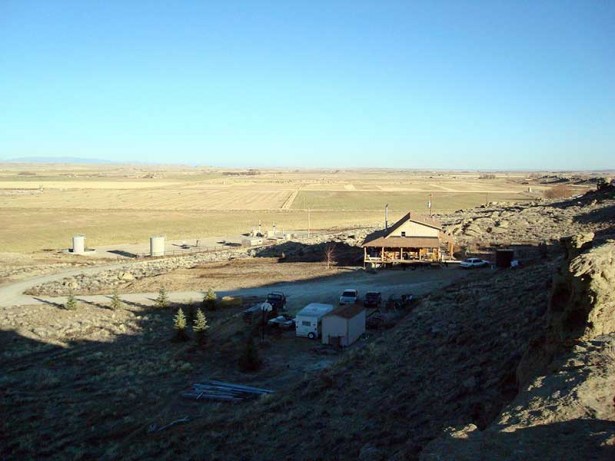
The U.S. Geological Survey (USGS) has confirmed that groundwater in Pavillion, Wyoming, on the Wind River Indian Reservation contains contaminants associated with fracking—linking, for the first time, the hydraulic-fracturing method of extracting oil and gas from shale with water pollution.
The USGS study was conducted on one of two wells drilled by the U.S. Environmental Protection Agency (EPA) in 2010 after residents of the small town said their water smelled and tasted strange. On Wednesday September 26 the USGS announced that the water had again tested positive for high levels of methane, ethane, diesel compounds and phenol, Bloomberg reported. These are some of the very chemicals used for fracking, in which holes drilled deep into shale beds and injected with highly pressurized water, sand and chemicals to extract gas and oil.
It was the second time in as many years that the well had yielded such results. A draft report issued in December 2011 after an earlier round of testing was the first time the U.S. government had documented a link between fracking and water contamination, the EPA said.
Encana Corp., the Calgary, Canada–based drilling company, said the results are flawed because the EPA had drilled the well into a gas reserve, which meant the compounds were naturally occurring and not due to processing. Wyoming officials raised similar issues.
“This goes to the heart of concerns raised by state and federal agencies, as well as Encana: EPA’s wells are improperly constructed,” Encana spokesman Doug Hock told The Wall Street Journal. Encana has 140 natural-gas wells in the region, according to Bloomberg.
Indeed, a study released earlier this year at the annual meeting of the American Association for the Advancement of Science found no evidence of groundwater contamination from fracking, laying blame instead on the shoddy practices that accompany it.
“The recommendation still stands that we don’t cook or drink our water,” farmer John Fenton told Bloomberg, describing his instructions from the EPA.
New tests were conducted in April 2012 on one well—the second did not produce enough water to provide an analyzable sample, the EPA said—by a team consisting of one person from the Northern Arapaho and Eastern Shoshone tribes on the Wind River Indian Reservation, along with one staff member each from the EPA and the Wyoming Department of Environmental Quality, a spokesman for Wyoming Governor Matt Mead told the Associated Press.
Mead was reserved in his assessment of the latest results.
“I have said that we will be guided by science in the way we react to the investigation of impacts on water outside of Pavillion,” he said in a statement. “The collaborative effort used to gather this data allowed Wyoming experts to have a say about sampling methodology and testing procedures. I feel that the process used to acquire this data was an improvement on the process used for the draft EPA report last December.”
More on pollution on the Wind River Indian Reservation
Extra Testing Being Conducted for Wind River Reservation Uranium Contamination
Cancer-Riddled Wind River Reservation Fights EPA Over Uranium Contamination